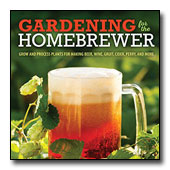Monarda 'Cambridge Scarlet'
BEE BALM, OSWEGO TEA, HORSEMINT
Family: Lamiaceae

Quick Jumps
Growing Guide
Rainy Side Notes
GROWING GUIDE

Origin:
Garden.
Plant Group:
Herbs.
Hardiness:
Sunset zones: All zones (Western).
USDA zones: 4-9.
Mature size:
Height: 3 feet.
Width: 18 inches.
Flowering period:
July.
Flowering attributes:
Cool toned, red flowers with brown-red calyces.
Leaf attributes:
Minty fragrance, dark green leaves.
Growth habit:
Clump forming.
Light:
Full sun to partial shade.
Soil:
Humus rich, moist, well-drained soil. Needs extra moisture during our Northwest drought period.
Propagation Methods:
Divide clumps in spring or fall.
Pests and Diseases:
Very susceptible to powdery mildew.
Rainy Side Notes

Monarda has many common names, and I have often wondered why. Its botanical name, monarda was given after the Spanish medical botanist, Dr. Nicholas Monardes of Seville, who described wild bergamot in his work, American Floras, in 1571. Monardes probably called Monarda, bergamot because the leaf fragrance resembles Italian bergamot. John Bartram of Philadelphia was instrumental in introducing the plant into England. He collected seed near Oswego, New York and sent them to Peter Collinson. Collinson named the plant "Oswego tea" after it bloomed in his garden in 1745. The other common name, bee balm, came about when people used the flowers to make it into a poultice, taking the sting out of bee stings. The poultice was used for other skin disorders, too.
The Oswego Indians of the eastern United States shared their fondness for Monarda didyma as a tea with colonial settlers. Soon after the Boston Tea Party, a shortage of imported tea forced the colonists to substitute monarda as a tea during the shortage. Native Americans had discovered it long before the famous Boston Tea Party and used the plant for many purposes besides tea. The Shakers learned to use the tea for treating colds and sore throats, and other settlers inhaled the fumes of steamed plants to clear sinuses.
The cultivar Monarda 'Cambridge Scarlet' is a good hummingbird, butterfly and bee plant and makes striking, long-lasting cut flowers. The flowers are edible and the leaves can be used to flavor apple jelly, fruit cups, and salads. Dried flowers and leaves are used in potpourris.
Monarda does creep around but is not hard to control by dividing every third year. The best reason to grow it besides its rich history? It is just plain beautiful!
A Pacific Northwest Plant of the Week (2013)

Gardening for the Homebrewer: Grow and Process Plants for Making Beer, Wine, Gruit, Cider, Perry, and More
By co-authors Debbie Teashon (Rainy Side Gardeners) and Wendy Tweton
Copyright Notice | Home | Search | Perennials

